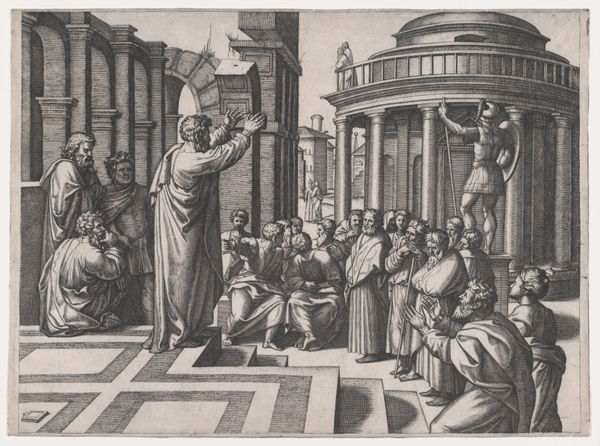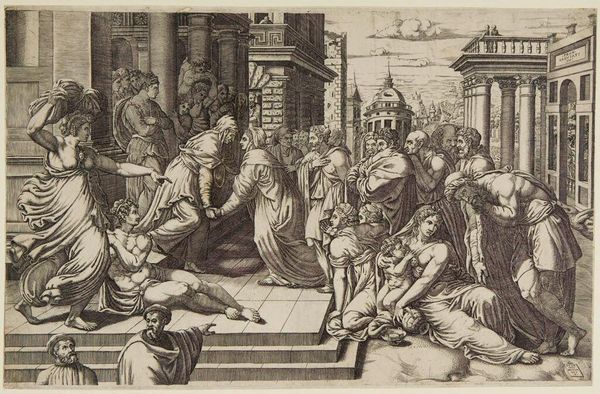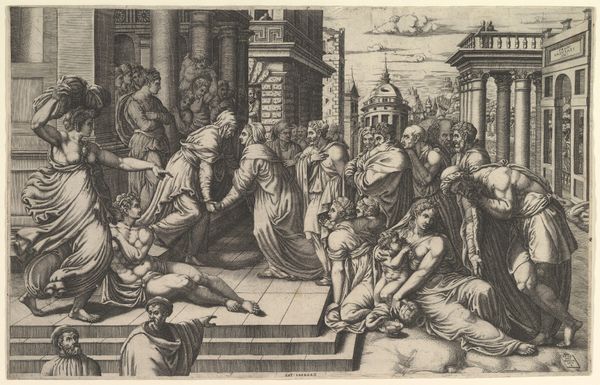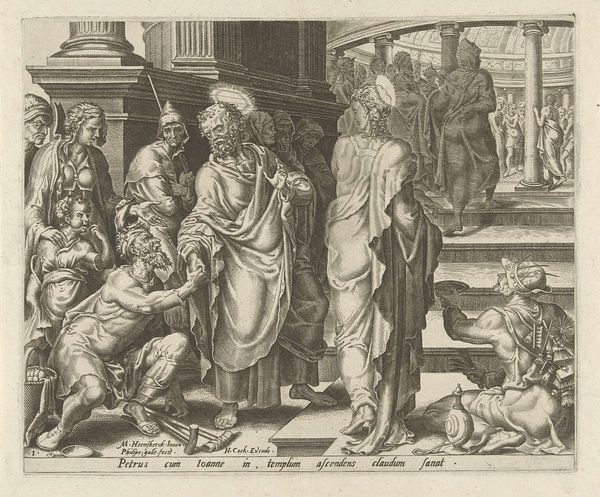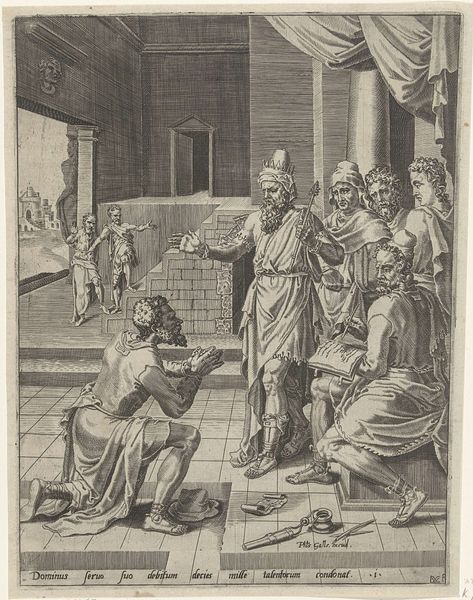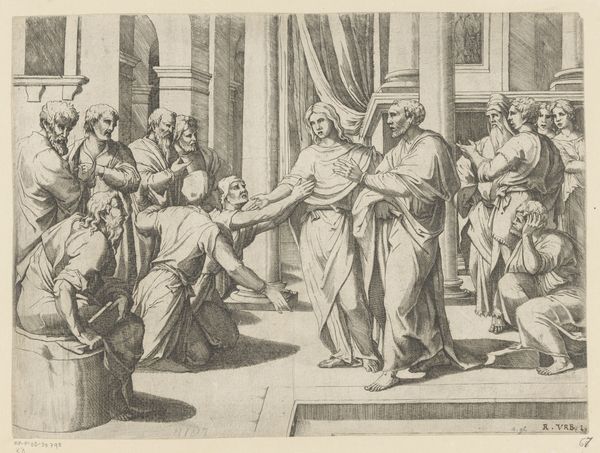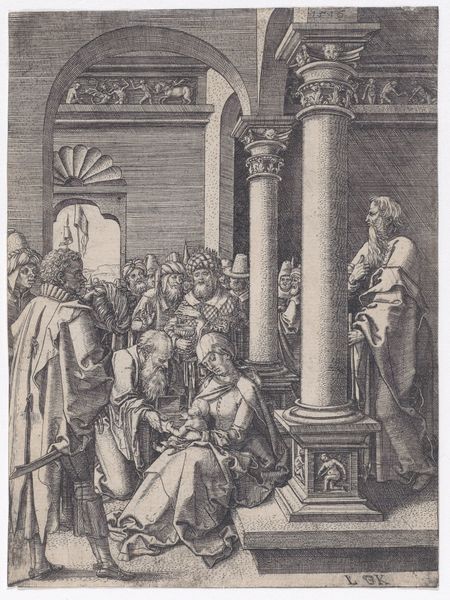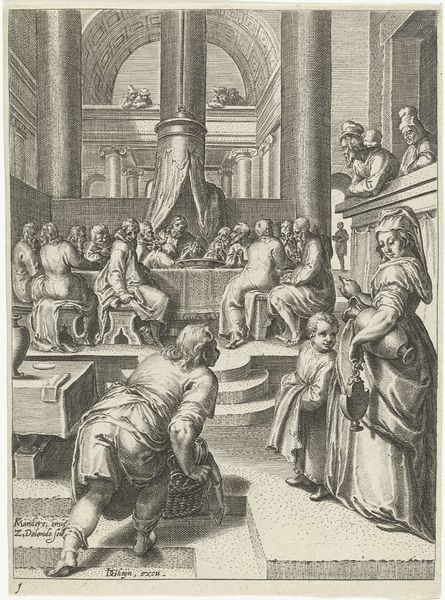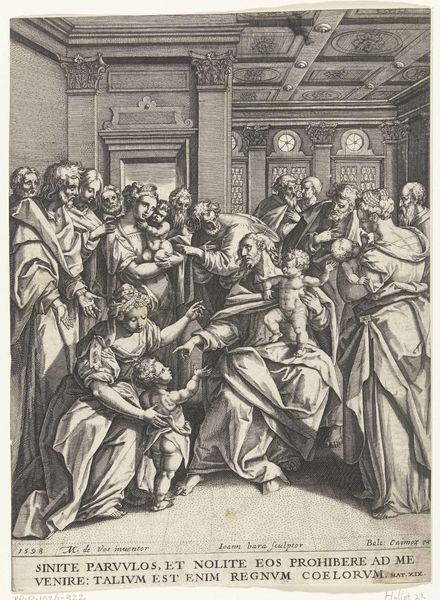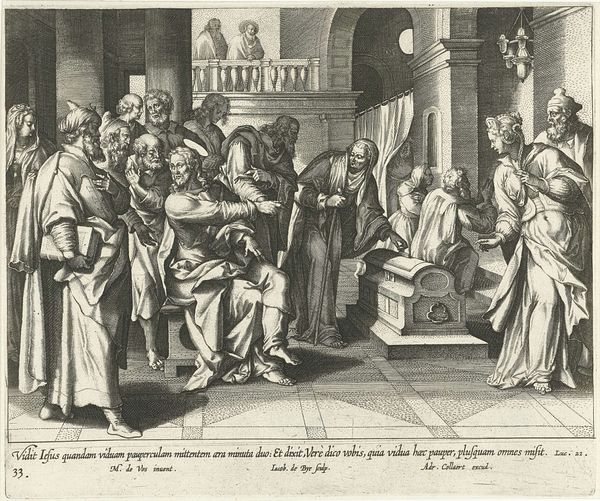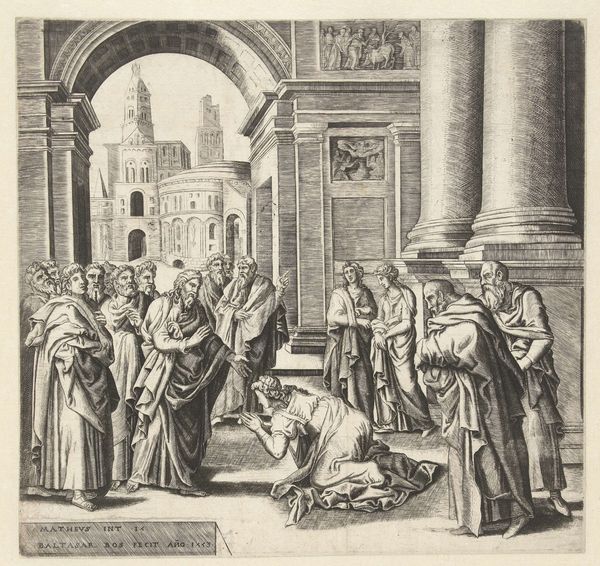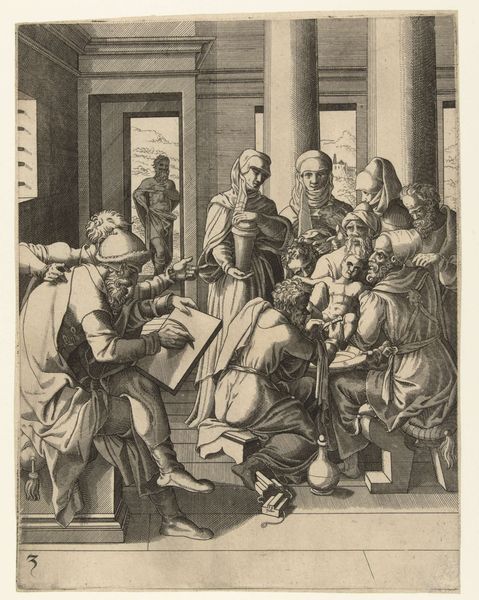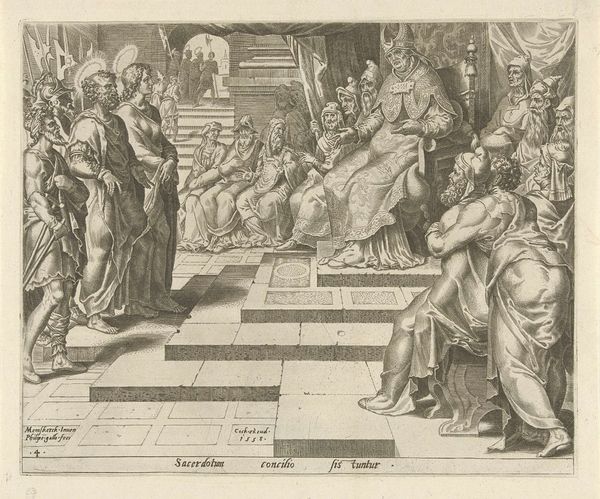
print, engraving
# print
#
old engraving style
#
figuration
#
11_renaissance
#
portrait drawing
#
genre-painting
#
history-painting
#
academic-art
#
engraving
Dimensions: height 272 mm, width 350 mm
Copyright: Rijks Museum: Open Domain
Curator: Welcome. Before us is an engraving entitled "Preaching of Paul in Athens." It's attributed to an anonymous artist and dates back to somewhere between 1517 and 1570. You can find this compelling piece here at the Rijksmuseum. Editor: Wow, it’s moody, isn’t it? It looks like a stage, with the characters frozen in place by some weighty philosophical pronouncement. The light and shadow, those sharp lines—they feel very deliberate, almost…theatrical. Curator: Precisely. The piece offers an interesting visual commentary on the power dynamics inherent in early Christian evangelism within a complex sociopolitical landscape. Note how Paul is positioned; his stance, raised hands—very deliberate choices to convey authority. The crowd, diverse in age and reaction, represents the broader Athenian society’s response to new religious doctrines. Editor: I can almost hear the rustle of togas and the murmur of a restless crowd! Paul looks so…determined. I'm thinking about who had access to images like this. What impact did these kinds of depictions have? Did they cement ideas of religious authority? Curator: Those are important considerations. The engraving style speaks to a particular artistic tradition—a blend of classical influences with emerging Renaissance aesthetics. As for impact, remember prints had a broad circulation in that era, and so this particular work likely played a part in shaping the European imaginary surrounding early Christian history and the complex interaction of classical thought and Christianity. Editor: It does seem very meticulously planned, right down to the building facades behind the crowd. It’s really captivating to think about what kinds of ideological programs might be operating in this relatively small piece of art. You almost wonder about the engraver too and where their own biases might have been. Curator: Well put. Examining works such as these gives us insight into the intersectional aspects of culture, religion, and power that continue to resonate. Editor: And sometimes the simplest line drawings can conjure up the most complex social dialogues!
Comments
No comments
Be the first to comment and join the conversation on the ultimate creative platform.
